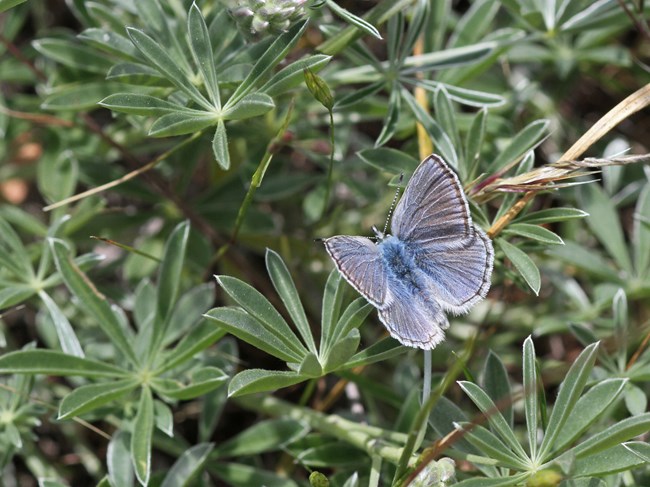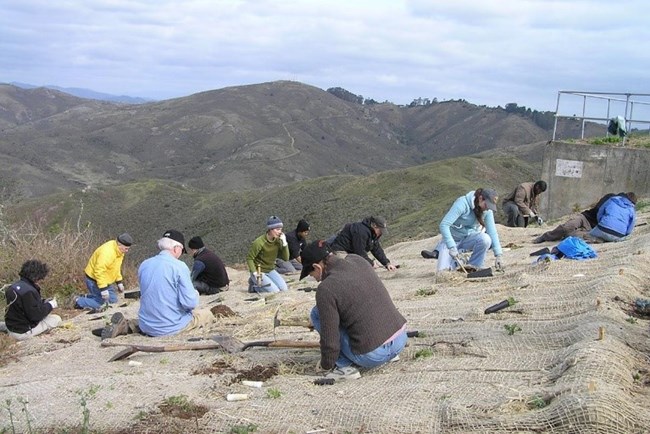
Will Elder/NPS The Mission Blue Butterfly's StoryAlthough Hawk Hill is primarily known for migrating raptors, the wings of a much smaller creature known as the mission blue butterfly are what keeps restoration ecologists returning to the site. One of the first invertebrates to be protected under the Endangered Species Act, this small butterfly is an important ecological player within Golden Gate’s grasslands. Though they are in our park year-round, they’re most noticeable for only six to eight weeks of the year when the adults can be seen flying about. 
GGNPC Habitat Restoration for Mission Blue ButterfliesOver a number of decades, non-native Monterey pine and cypress trees spread into the grasslands at Hawk Hill. These trees likely arrived as hitchhikers, inadvertently brought in during the construction of military fortifications. The trees became so abundant and dense that they acted as a barrier between areas of lupine on either side of the ridgeline between the Rifle Range and Conzelman Road. Restoration continues today, and includes an ongoing focus on native plant reinstatement as well as non-native invasive species control. These invasive species include French broom (Genista monspessulana), jubata grass (Cortaderia jubata), blackwood acacia (Acacia melanoxylon), Australian tea trees (Leptospermum laevigatum), cotoneaster sp., and panic veldt grass (Ehrharta erecta). By eliminating these invasive plants that outcompete the plants that host and feed mission blue butteries, restoration ecologists and volunteers ensure the continued survival of these tiny-but-important pollinators. |
Last updated: September 21, 2020
